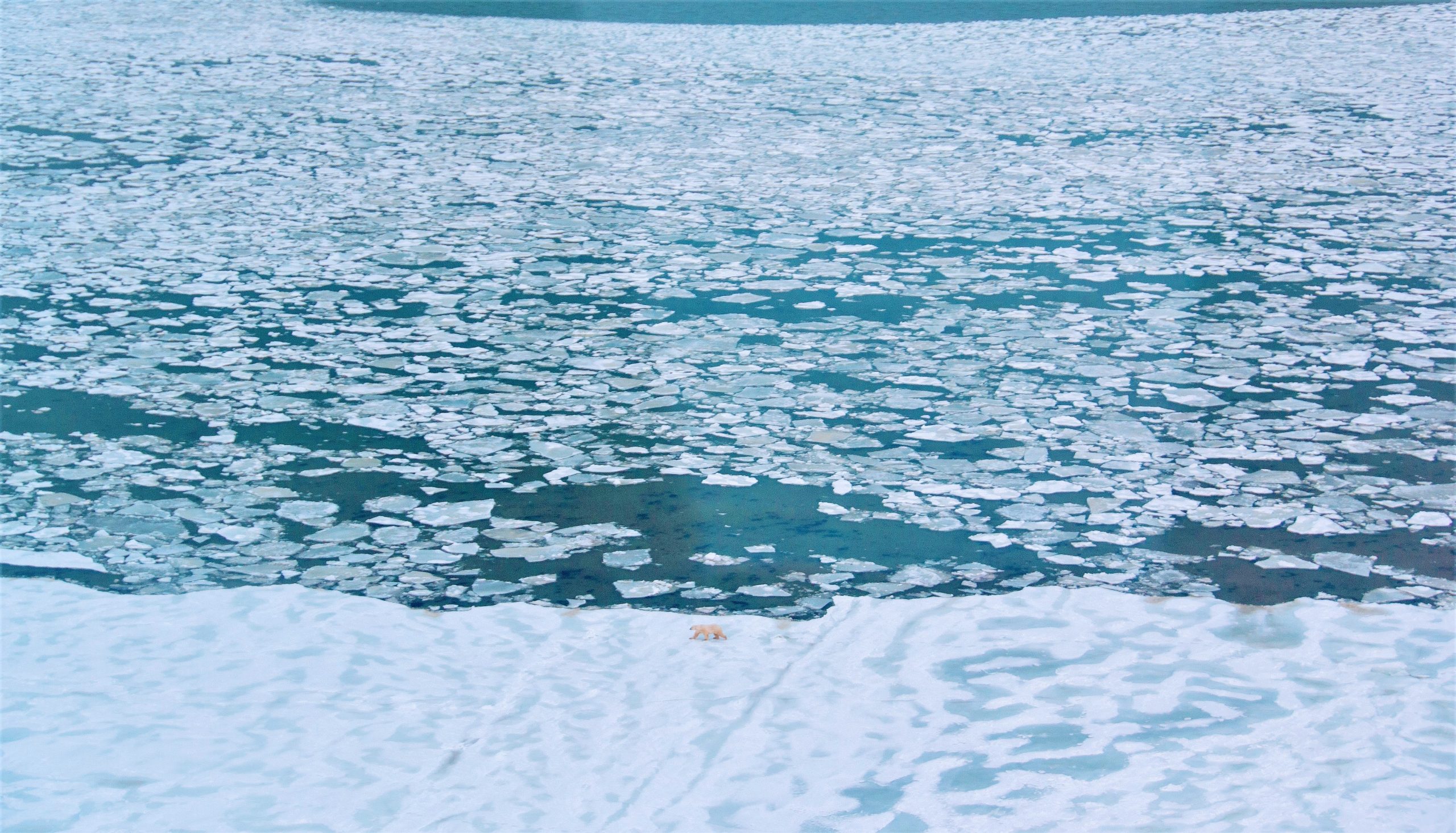Each autumn, polar bears congregate along Hudson Bay in anticipation of their annual seal hunt. While waiting for the freeze-up to access these blubbery sea mammals, they supplement their diet with beached whales, fish, waterfowl, kelp, mushrooms, mosses and the ten types of berries that dot the tundra like gems, from the aptly named bearberry to the golden cloudberry. Black and white spruce, balsam fir and tamarack dominate the boreal forests, and the tundra is frozen in continuous permafrost. Yet life is found even in the coldest corners of the Earth, home to Arctic foxes, willow ptarmigan, caribou and white hares.

This seemingly ethereal land is one of survival against all odds, where heliocentric flowers turn toward the sun, and wood frogs sustain themselves by freezing into the water and thawing each spring. I traveled with Natural Habitat Adventures to this remote portion of the subarctic to seek out the polar bear, a journey that reminded me much of the folk tale, East of the Sun and West of the Moon, in which a girl sets out on a quest north to find an enchanted white bear. No creature holds more mystique than Ursus Maritimus, a being of both land and sea.



Lumps of butter yellow in the snow—polar bear cubs!
I did not think any experience could top my first time seeing a polar bear in the wild. A large male walked across a frozen pond, heading straight toward our Polar Rover. The King of the Arctic, his white coat one of regal splendor, approached my window, his breath fogging the frosty pane. A few days later, I believed nothing could beat sitting amid the trifecta of a snowy owl, a seal on the ice and a mother bear with 8-month-old cubs. But being in the air, I saw the bears’ home anew.

The crowning experience of our trip was one I was initially apprehensive of—a helicopter flight over the tundra. Having never been in a helicopter before and with a propensity to dislike heights, I was a bit wary, but once in the sky, that feeling was transformed into one of pure exhilaration. A moose with her calf trotted below us in waist-high willows, their burgundy branches adorned with the last few golden leaves of fall. We passed a shipwreck, half sunk into the waves which lapped at its metal hull, slowly turning it to rust. As we flew over Wapusk National Park, a polar bear denning area off-limits to the public, we saw footprints. Wisps of snow blew over the frozen landscape in winding trails as a solitary bear trekked across the vast expanse of ice.

Playful males engaged in mock battle.

Cream-colored lumps were curled up asleep in kelp beds on the bay’s edge.

Opening the window, there was a blast of arctic air. I inhaled deeply, hair whipping in the wind as I photographed the wondrous wildlife below. It was like entering into another world, this land of endless stretches of white. Then, suddenly, a scarlet patch of snow. We circled the scene, but there was no sign of life. Onward we went and shortly came upon a striking image.

A bear, eating the remains of its kill on shore, staining the ice a deep vermillion. This vivid picture is one that will stay in my memory forever.

Viewing more than 30 polar bears and witnessing their incredible behaviors at a surprisingly close distance left me awestruck. Adding to the morning’s excitement, that afternoon, we went dogsledding and cuddled some adorable husky puppies!


The trip ended in perfect happiness, and there is no doubt that the far north left a lasting impression on my heart.







All photos © Emily Goodheart































